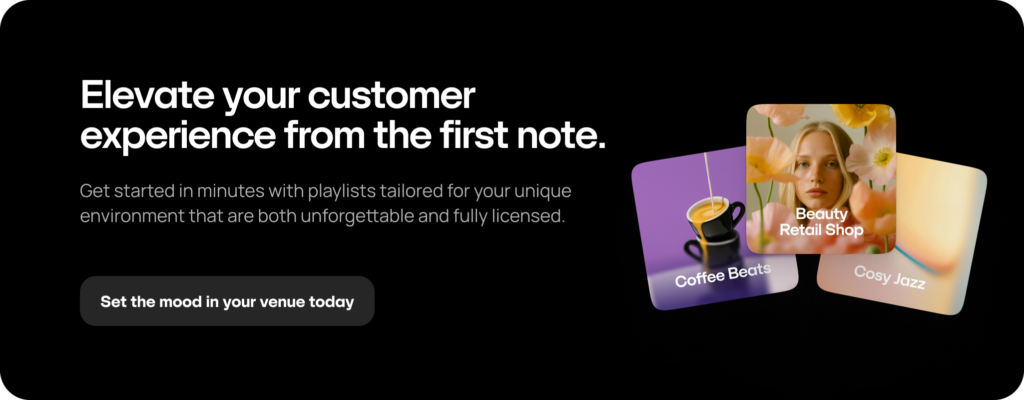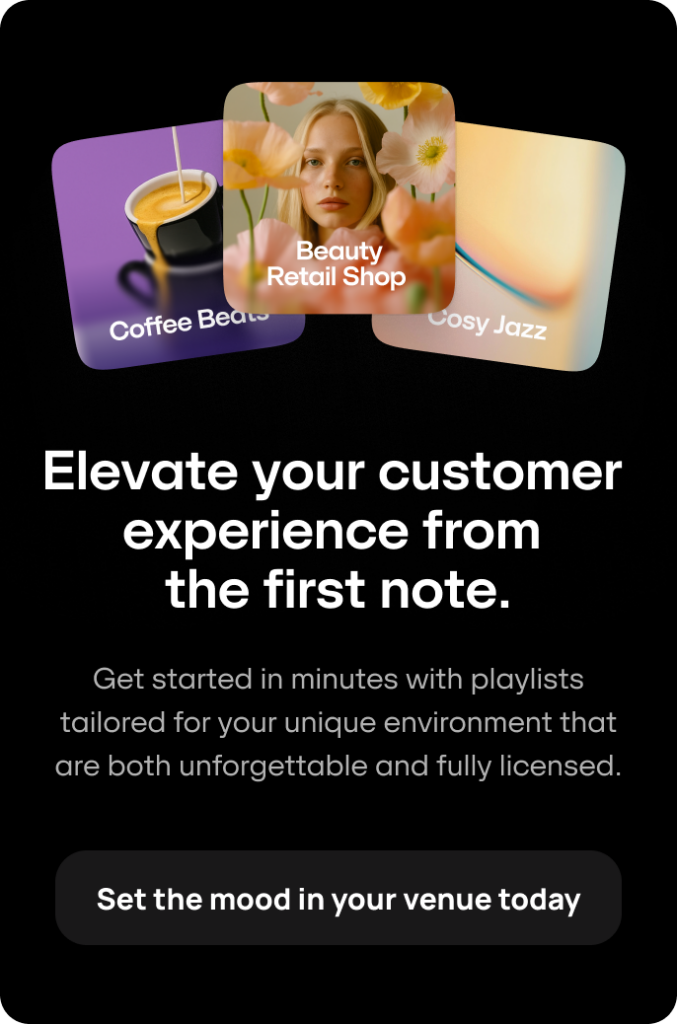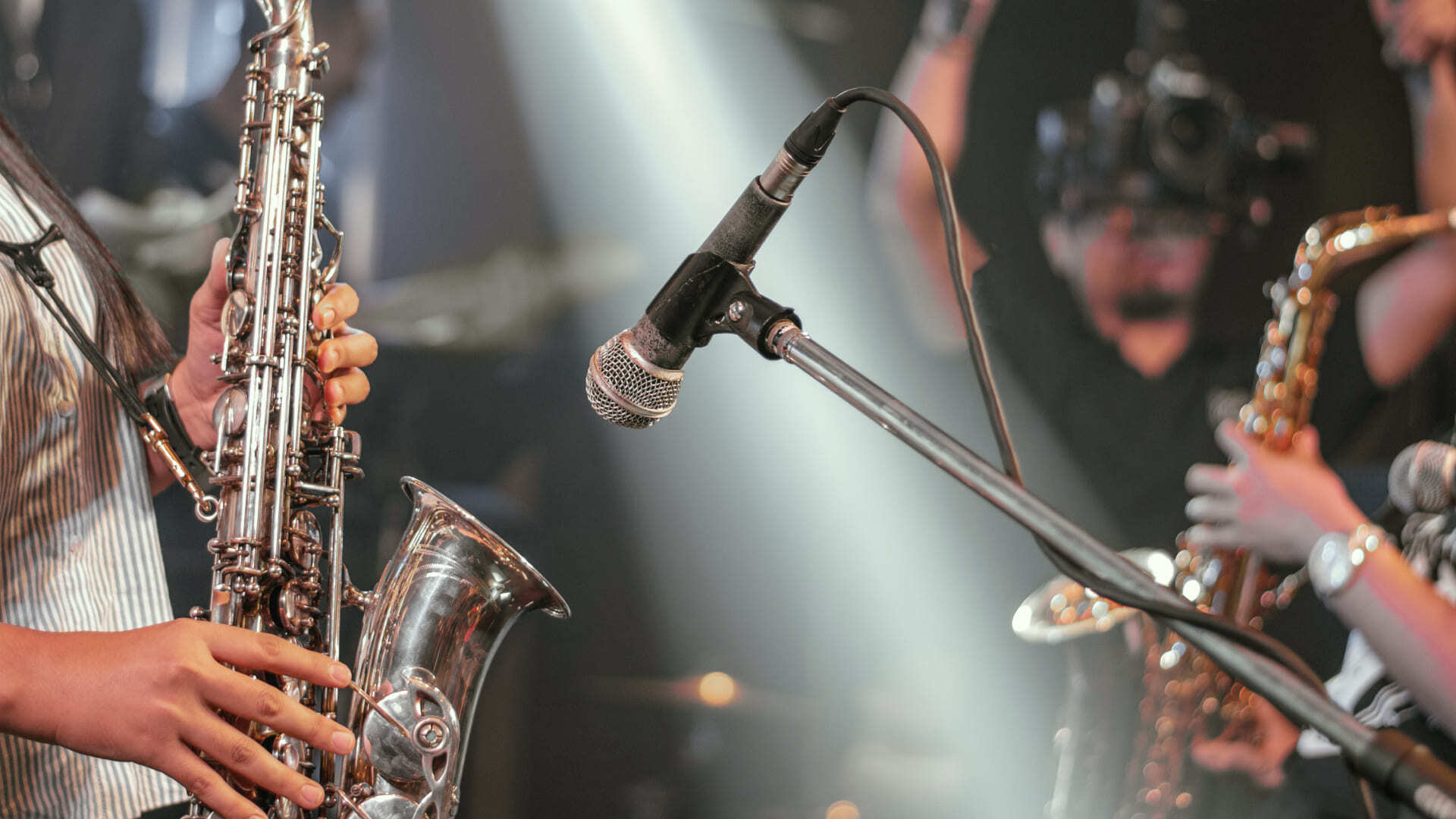Want a great way to boost table turnover rate? Use the power of music

The restaurant business is among the most competitive and difficult ventures to manage. Restaurants have to address various challenges: deliver excellent client service, meet changing consumer needs, digitize workflows, make sure the visual style and brand positioning match. Providing a high restaurant table turnover rate is another important issue owners should care about to maintain a stable source of income.
Table turnover rate is a key performance indicator of your establishment. The KPI measures how well you utilize the space and resources to serve as many guests as possible and increase sales. A low seat turnover rate means that your tables are occupied for too long by the same people, which limits your revenue potential.
A high table turnover rate, in turn, says that your tables are occupied by different parties for shorter times. Thanks to this, you can serve more clients and maximize profit. However, how do you improve the turnover time in your restaurant without compromising the quality of service and guest experience?
- Brand-fit music to improve restaurant table turnover rate
- What is brand-fit background music?
- How does music impact restaurant table turnover rate?
- What music solution will help you maximize table turnover rate?


Brand-fit music to improve restaurant table turnover rate
Brand-fit background music is a cost-effective way to resolve this challenge. Music is a scientifically proven method to boost the audience’s engagement and grow income. When playing carefully selected music that reflects their culture, restaurants can push up overall sales by more than 9%, dessert sales — by over 15%, and side dishes — by greater than 11%, according to HUI Research.
MRC Data reports that tailored background music encourages 41% of people to stay longer and 39% of survey participants — to return to a company. Find more interesting statistics on music benefits for venues in our recent post.
Talking about how to improve turnover time in a restaurant, let’s first clarify what brand-fit background music is.
What is brand-fit background music?
Brand-fit music means that playlists you stream align with your brand positioning, the target audience’s expectations, and staff tastes. The genres you choose should resonate with the type of your establishment. It will be weird, for example, to listen to disco and hip hop music in a hotel or family café.
Tailored background music is also about playing tracks and compositions with a certain tempo and volume based on time of day, situation, and venue’s characteristics as well. The Gallup Organization Survey revealed that fast-tempo rhythmic music may help bars increase profits by nearly 41%.
In case you own, say, a classic European restaurant, your customers most likely want to have a calm rest or hold a business meeting. Therefore, it’s not advisable to make music loud, since this may distract people and disrupt the dining experience.
Regarding genres, you can freely opt for vocal, smooth, and instrumental jazz during daylight and in the evenings while streaming R&B, swing, and modern dance jazz, and 70s-80s soul on Friday and Saturday nights.
Find out how to choose background music that will be loved by your clients and employees enabling you to create a unique delightful atmosphere and improve brand loyalty.
How does music impact restaurant table turnover rate?
Background music may impact not only the audience’s engagement and retention rates but the speed at which people take food. A recent study proved that music tempo affects the chew rate. The analysts asked participants to eat a few pieces of chocolate under the influence of different-tempo music while the surveyed didn’t know they were being supervised.
The experts used two versions of the same composition in their test. The research found that eating duration was considerably longer when consumers were listening to slow-paced songs with notes connected into one another (“legato”) rather than when hearing fast tracks with notes played separately (“staccato”).
This way, you can encourage guests to eat faster by using upbeat energetic music that creates a sense of urgency or excitement. This technique is especially beneficial for public places like night/disco bars and fast-food restaurants, where table turnover rate has a direct effect on the revenue. We also recommend playing rhythmic tracks at lunch time.
Meanwhile, if you want clients to take their time, have a peaceful rest, and enjoy an elegant ambiance, you should choose soft quiet songs and melodies that evoke a sense of calmness and relaxation.
Interestingly, music can enhance food taste and flavor by influencing the sensory perception and customer emotional response. On top of that, background music may stimulate people to do certain actions, for instance, order drinks.
See what Thomas Lecuyer, the owner of LP’s Bar in Switzerland, says about music curation:
“The sound design is as important as the choice of decor, lighting, menu and staff. Music is the final and most important ingredient that defines the identity of a venue. It also impacts the mood of customers which, in turn, influences their way of consuming.
Via specifically curated music and paying attention to the time of day, we can direct the clientele towards certain desired behaviors: relaxed in the afternoon, animated at aperitif time, festive after dinner. Basically, music can determine whether it’s time to drink a cup of tea, beer, gin and tonic, mojito or shots.
Turnover is clearly improved where there is well-chosen music in harmony with the establishment. If the menu’s good but the music’s awful, customers won’t return.”
What music solution will help you maximize table turnover rate?
If you’re going to integrate music for improving table turnover time in the restaurant, you’ll be happy to find a cost-effective and easy-to-use technology solution. However, the background music market is still fragmented and legacy with CDs and radio.
Using apps like Spotify is illegal and may lead to significant fines. Still, dealing with licensing agreements is unlikely to be a pleasant job. Songs not matching the atmosphere, irritating track repeats, music interrupted with ads or stopped when the Internet connection is lost…
These are common problems establishments have to cope with when not utilizing a specialized music curation service.
At Moodby, we undertake background music curation, so that you can focus on core business. We provide Moodby Play, a B2B music streaming platform that provides numerous playlists and stations with licensed music tailored to your venue type.
Moodby Play allows brands to manage music across multiple locations via a simple interface. The product includes playlist scheduling, centralized control, an explicit lyrics filter, offline mode, and other valuable features.


